Youth Lacrosse Stick Length Guide Improve Your Game With the Right Size StickYouth Lacrosse Stick Length Guide Improve Your Game With the Right Size Stick
Youth Lacrosse Sticks Are Shorter to Help Young Players Develop Key Skills
When first starting out in lacrosse, it’s important for young players to use a stick designed for their age group. Lacrosse sticks for youth are shorter in length compared to high school, college, and pro sticks. Using an appropriately sized lacrosse stick allows young athletes to efficiently develop the fundamental skills of cradling, scooping, catching, throwing, and shooting needed to advance in the sport.
According to US Lacrosse regulations, acceptable lacrosse stick lengths for youth players are 37 to 42 inches for ages 15 and under. Typically, elementary school-aged players will use sticks at the shorter end of this range, around 37 to 40 inches, while middle school players may size up to 40 to 42 inches. The shorter length helps young players learn proper mechanics with a stick weight and size proportionate to their smaller hands, arms, and bodies.
Long sticks are harder for youth to control and can negatively impact form. Shorter shafts give young players more control over cradling, catching, and ball retention compared to an oversized stick. Quick hands and tight cradling are especially important for ball carriers weaving through traffic or trying to avoid checks. With a short stick, developing players can focus on keeping their hands close together for secure cradling rather than struggling with a long shaft flopping around. Shorter handles also allow for a quicker release when passing and shooting.
Beginners need all the help they can get when first attempting ground balls. Shorter sticks give youth players an advantage here as well, allowing them to get their sticks horizontal to the ground faster for clean scoops. Goalies also benefit from using short sticks, as the reduced length allows them to move the stick quicker for saves on rapid shot attempts.
While length regulations restrict youth sticks to make skill building easier, shaft materials like composite instead of metal also help reduce weight for optimal maneuverability. Overall, youth lacrosse sticks short in length, light in weight, and sized right for a child’s frame offer the best experience for cementing fundamentals that will pay dividends as young players grow into bigger stick sizes.
Proper Lacrosse Stick Length Varies By Player Age and Position
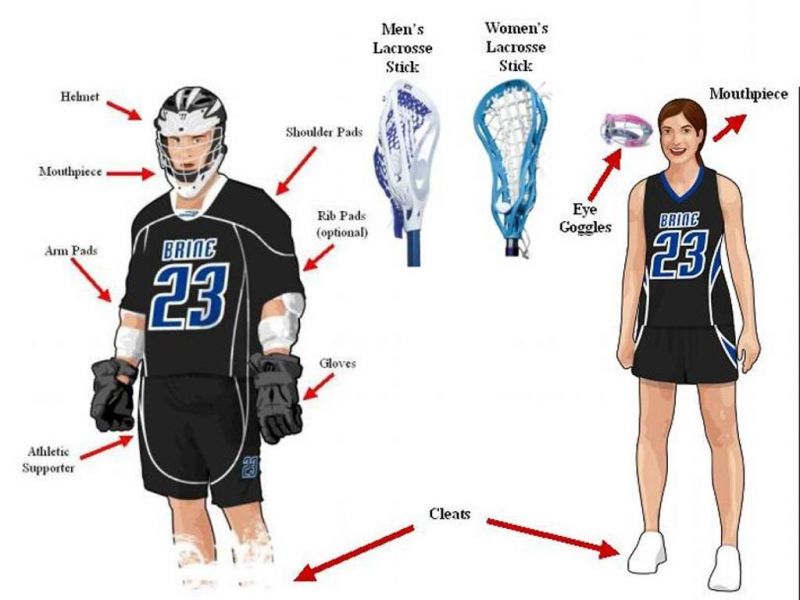
When selecting the right lacrosse stick length for youth players, age and position on the field must be taken into account. While general youth stick length guidelines exist, more nuanced sizing considerations will ensure each young athlete is outfitted with a stick optimized for their current size, strength, and role within a team’s strategy.
According to US Lacrosse rules, acceptable stick lengths for youth players fall between 37 to 42 inches. However, these regulations provide a wide range, not a one-size-fits-all standard. Specific lacrosse stick sizing depends on the player’s age, with length increasing progressively from elementary school through middle school.
For elementary school kids around ages 7 to 10, stick lengths at the lower end of the permitted range are recommended. Sticks of 37 to 40 inches suit most young beginners, allowing them to more easily control the implement as they build cradling, throwing, catching, and scooping skills. As players advance into middle school around ages 11 to 14, they can begin sizing up to stick lengths of 40 to 42 inches to match their growing physiques.
In addition to matching age-appropriate sizes, lacrosse stick length should align with the player’s on-field position. Defenders use longer sticks of up to the maximum 42 inches for a wider blocking range when guarding opponents. Longer handles let them disrupt passing lanes and checks easier with extra reach. Attackers at the other end of the spectrum rely on quicker sticks of around 37 to 40 inches for crisp passing, fast shooting, and elusive dodging in tight quarters near the goal.
Midfield players balance checking duties with scoring drives in transition, requiring median stick lengths around 40 inches. Face-off specialists also favor shorter 40 inch sticks for scrappy battles at the X to gain initial possession. Goalies have their own oversized regulations, relying on extra long shafts up to 72 inches for maximum stopping coverage of the net.
While age sets a baseline for youth stick lengths, coaches and parents should fine tune sizing based on position, skill level, and physical development. With the right lacrosse stick proportions, young players can showcase their talents at any spot on the field.
Shorter Lacrosse Sticks Help Young Players Develop Key Skills

Lacrosse sticks designed for youth players are shorter in length to help facilitate skill development. While high school, college, and pro players use sticks with shafts up to 60 inches, sticks for young athletes are significantly smaller based on age guidelines and position needs.
According to US Lacrosse rules, acceptable youth lacrosse stick lengths range from 37 to 42 inches for players aged 15 and under. The reduced size versus older player sticks makes fundamentals like cradling, scooping, throwing, catching, and shooting easier to master for young beginners. Proper mechanics are easier to reinforce with a lighter, shorter stick sized for a youth player’s hands, arms, and smaller stature.
With a shorter lacrosse stick, young players can focus on keeping their hands tight together when cradling to retain possession, rather than struggling to control a long floppy shaft. Quick hands and secure cradling become even more critical when weaving through traffic or absorbing checks. The abbreviated length also enables a faster release when passing and shooting on the run.
During ground ball battles, shorter sticks allow youth players to get their implement horizontal to the turf quicker for clean scoops. Shorter handles mean less arc to cover when trying to wrangle a loose ball. Goalies also take advantage of responsiveness gains with shorter sticks when attempting to block shots in tight spaces near the crease.
Stick materials also factor into the equation. Composite or titanium shafts reduce overall weight compared to solid wood or metal sticks of the same length. Combined with optimized short lengths, construction innovations help young players manage their sticks for crisper handling and passing.
While lacrosse stick regulations limit length for youth players, the short dimensions better enable young athletes to cement proper fundamentals. Skills developed with appropriately sized sticks will serve players well as they eventually transition to larger shaft lengths with age and experience.
When to Size Up from a Shorter to Longer Lacrosse Stick
Elementary School (Ages 7-10)
For the youngest players, sticks between 37 and 40 inches are ideal. This shorter length allows for better control and helps build foundational skills without overwhelming small hands and bodies.
Middle School (Ages 11-14)
As players enter middle school, they can gradually transition to longer sticks. Lengths between 40 and 42 inches are appropriate for this age group, allowing for increased reach while maintaining manageable control.
Position-Specific Lacrosse Stick Length Considerations
Different positions on the field require varying stick lengths to optimize performance. Here’s a guide to position-specific stick lengths for youth players:
Attackers
Offensive players benefit from shorter sticks, typically between 37 and 40 inches. This length allows for quick movements, precise ball handling, and agile dodging in tight spaces near the goal.
Midfielders
Midfield players often use sticks around 40 inches long. This median length provides a balance between offensive agility and defensive reach, suiting the versatile nature of the position.
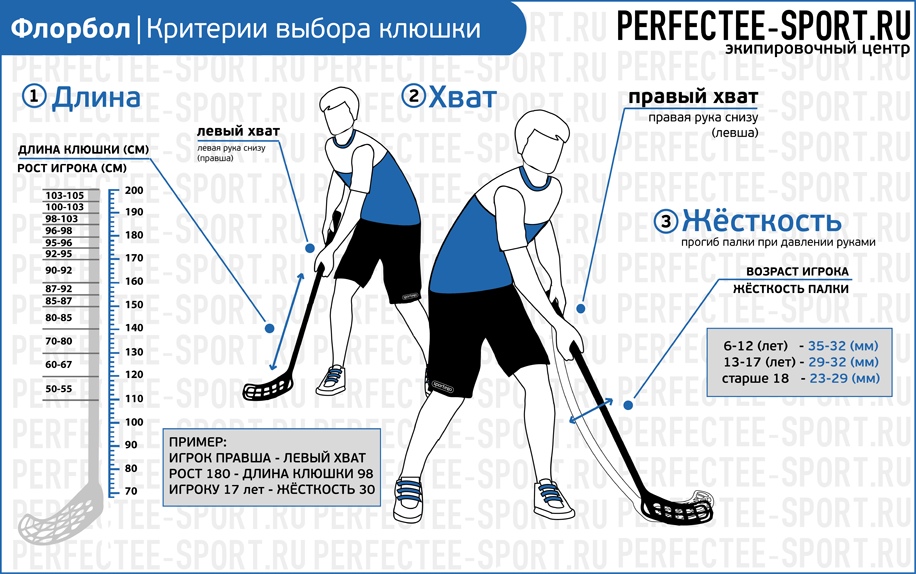
Defenders
Defensive players usually opt for longer sticks, up to the maximum 42 inches allowed for youth players. The extra length provides a wider blocking range and improved reach for disrupting passes and executing checks.
Face-off Specialists
Players specializing in face-offs typically prefer shorter sticks around 40 inches. This length offers better control and quicker movements during the intense battles at the X.
Goalies
Youth goalies have different stick length regulations, allowing for shafts up to 72 inches long. This extended reach helps maximize coverage of the goal area.
How Shorter Sticks Enhance Skill Development in Youth Lacrosse
The use of shorter sticks in youth lacrosse is not arbitrary; it’s a deliberate choice to facilitate skill development. But how exactly do shorter sticks contribute to a young player’s growth in the sport?
Improved Cradling and Ball Control
Shorter sticks allow young players to keep their hands closer together, resulting in tighter and more secure cradling. This improved control is especially beneficial when carrying the ball through traffic or evading defensive checks.

Enhanced Passing and Shooting Accuracy
With a shorter stick, young players can develop a quicker, more natural release when passing and shooting. This leads to improved accuracy and helps build confidence in offensive play.
Better Ground Ball Skills
Scooping ground balls is a fundamental skill in lacrosse. Shorter sticks make it easier for youth players to get their stick horizontal to the ground, facilitating cleaner and more efficient scoops.
Increased Maneuverability
The reduced length and weight of youth sticks allow for greater maneuverability. This enables young players to develop quick hands and agile stick work, essential skills as they progress in the sport.
The Role of Stick Materials in Youth Lacrosse Performance
While stick length is crucial, the materials used in youth lacrosse sticks also play a significant role in player development and performance. How do different materials impact a young player’s game?
Composite vs. Metal Shafts
Many youth lacrosse sticks feature composite shafts instead of metal. Composite materials offer several advantages for young players:

- Lighter weight for easier handling
- Reduced vibration for improved feel
- Increased durability to withstand impacts
- Better performance in cold weather
These benefits make composite shafts an excellent choice for youth players still developing their strength and technique.
Head Materials and Design
The head of a lacrosse stick is typically made from durable plastic materials. For youth players, softer plastics are often used to provide more flex and forgiveness when catching and throwing. This can help build confidence and reduce the likelihood of missed catches due to rigid equipment.
Transitioning to Longer Sticks: When and How?
As young players grow and develop their skills, they will eventually need to transition to longer sticks. But when is the right time to make this change, and how should it be approached?
Signs a Player is Ready for a Longer Stick
- Consistent demonstration of proper technique
- Physical growth that makes current stick feel too short
- Increased strength and control in stick handling
- Advancing to a higher level of play
Gradual Transition Strategy
When transitioning to a longer stick, it’s best to increase length gradually. This allows players to adjust their technique without drastically altering their game. A good rule of thumb is to increase stick length by 1-2 inches at a time, giving players ample opportunity to adapt before making further changes.
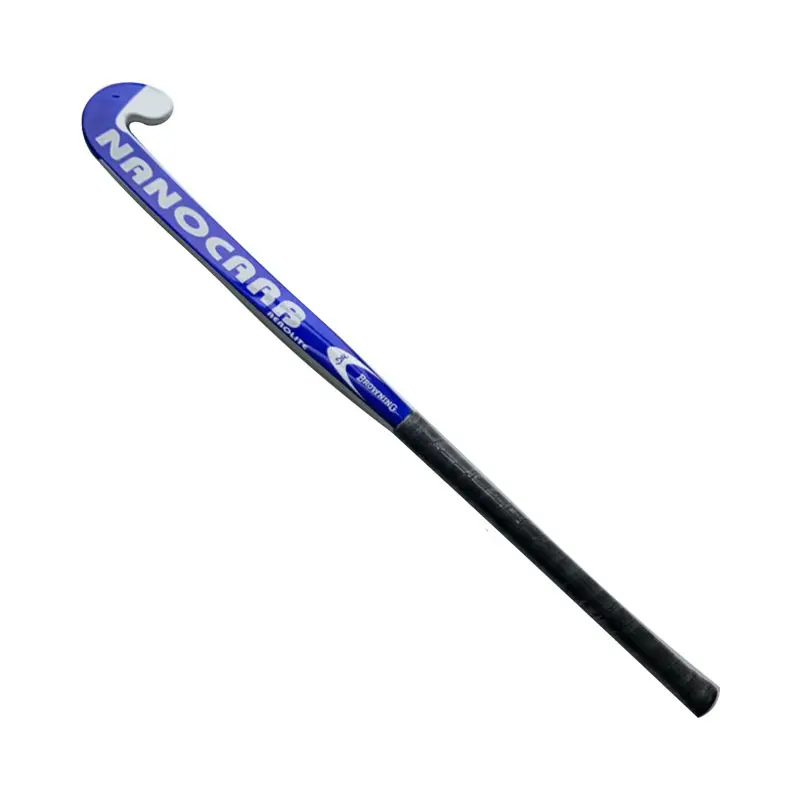
Common Mistakes in Youth Lacrosse Stick Selection
Choosing the right lacrosse stick for a young player is crucial, but it’s easy to make mistakes. What are some common pitfalls to avoid when selecting a youth lacrosse stick?
Opting for an Oversized Stick
One of the most frequent errors is choosing a stick that’s too long for the player. Parents or coaches might think a longer stick will give the player an advantage, but it often hinders skill development and can lead to poor technique.
Ignoring Position-Specific Requirements
Different positions on the field have distinct stick length needs. Failing to consider a player’s position when selecting a stick can put them at a disadvantage during games.
Prioritizing Price Over Quality
While budget is a consideration, choosing the cheapest option available may result in a stick that doesn’t perform well or breaks easily. Investing in a quality stick appropriate for the player’s age and skill level can enhance their experience and development in the sport.

Neglecting to Adjust Stick Length as Players Grow
As young players grow and develop, their stick length needs change. Failing to periodically reassess and adjust stick length can hinder a player’s progress and performance.
Maximizing Performance with Proper Stick Maintenance
Selecting the right stick is only part of the equation. Proper maintenance is crucial for ensuring optimal performance and longevity. How can young players and their parents keep lacrosse sticks in top condition?
Regular Cleaning
Dirt and debris can accumulate on the stick, affecting its performance. Regular cleaning with mild soap and water can keep the stick in good condition. Be sure to dry thoroughly to prevent rusting of metal parts.
Proper Storage
Storing lacrosse sticks in a cool, dry place can prevent warping and damage. Avoid leaving sticks in hot cars or damp environments.
String Maintenance
The strings on a lacrosse stick’s head can loosen over time, affecting ball control and shooting accuracy. Regular tightening and occasional restringing can maintain optimal performance.

Shaft Care
For composite shafts, avoid exposure to extreme temperatures. For metal shafts, watch for dents or bends that could compromise integrity. Sand down any rough spots to prevent hand injuries.
By following these maintenance tips, young players can ensure their properly sized lacrosse sticks continue to support their skill development and on-field performance.
Youth Lacrosse Sticks Are Shorter to Help Young Players Develop Key Skills
When first starting out in lacrosse, it’s important for young players to use a stick designed for their age group. Lacrosse sticks for youth are shorter in length compared to high school, college, and pro sticks. Using an appropriately sized lacrosse stick allows young athletes to efficiently develop the fundamental skills of cradling, scooping, catching, throwing, and shooting needed to advance in the sport.
According to US Lacrosse regulations, acceptable lacrosse stick lengths for youth players are 37 to 42 inches for ages 15 and under. Typically, elementary school-aged players will use sticks at the shorter end of this range, around 37 to 40 inches, while middle school players may size up to 40 to 42 inches. The shorter length helps young players learn proper mechanics with a stick weight and size proportionate to their smaller hands, arms, and bodies.
Long sticks are harder for youth to control and can negatively impact form. Shorter shafts give young players more control over cradling, catching, and ball retention compared to an oversized stick. Quick hands and tight cradling are especially important for ball carriers weaving through traffic or trying to avoid checks. With a short stick, developing players can focus on keeping their hands close together for secure cradling rather than struggling with a long shaft flopping around. Shorter handles also allow for a quicker release when passing and shooting.
Beginners need all the help they can get when first attempting ground balls. Shorter sticks give youth players an advantage here as well, allowing them to get their sticks horizontal to the ground faster for clean scoops. Goalies also benefit from using short sticks, as the reduced length allows them to move the stick quicker for saves on rapid shot attempts.
While length regulations restrict youth sticks to make skill building easier, shaft materials like composite instead of metal also help reduce weight for optimal maneuverability. Overall, youth lacrosse sticks short in length, light in weight, and sized right for a child’s frame offer the best experience for cementing fundamentals that will pay dividends as young players grow into bigger stick sizes.
Proper Lacrosse Stick Length Varies By Player Age and Position

When selecting the right lacrosse stick length for youth players, age and position on the field must be taken into account. While general youth stick length guidelines exist, more nuanced sizing considerations will ensure each young athlete is outfitted with a stick optimized for their current size, strength, and role within a team’s strategy.
According to US Lacrosse rules, acceptable stick lengths for youth players fall between 37 to 42 inches. However, these regulations provide a wide range, not a one-size-fits-all standard. Specific lacrosse stick sizing depends on the player’s age, with length increasing progressively from elementary school through middle school.
For elementary school kids around ages 7 to 10, stick lengths at the lower end of the permitted range are recommended. Sticks of 37 to 40 inches suit most young beginners, allowing them to more easily control the implement as they build cradling, throwing, catching, and scooping skills. As players advance into middle school around ages 11 to 14, they can begin sizing up to stick lengths of 40 to 42 inches to match their growing physiques.
In addition to matching age-appropriate sizes, lacrosse stick length should align with the player’s on-field position. Defenders use longer sticks of up to the maximum 42 inches for a wider blocking range when guarding opponents. Longer handles let them disrupt passing lanes and checks easier with extra reach. Attackers at the other end of the spectrum rely on quicker sticks of around 37 to 40 inches for crisp passing, fast shooting, and elusive dodging in tight quarters near the goal.
Midfield players balance checking duties with scoring drives in transition, requiring median stick lengths around 40 inches. Face-off specialists also favor shorter 40 inch sticks for scrappy battles at the X to gain initial possession. Goalies have their own oversized regulations, relying on extra long shafts up to 72 inches for maximum stopping coverage of the net.
While age sets a baseline for youth stick lengths, coaches and parents should fine tune sizing based on position, skill level, and physical development. With the right lacrosse stick proportions, young players can showcase their talents at any spot on the field.
Shorter Lacrosse Sticks Help Young Players Develop Key Skills

Lacrosse sticks designed for youth players are shorter in length to help facilitate skill development. While high school, college, and pro players use sticks with shafts up to 60 inches, sticks for young athletes are significantly smaller based on age guidelines and position needs.
According to US Lacrosse rules, acceptable youth lacrosse stick lengths range from 37 to 42 inches for players aged 15 and under. The reduced size versus older player sticks makes fundamentals like cradling, scooping, throwing, catching, and shooting easier to master for young beginners. Proper mechanics are easier to reinforce with a lighter, shorter stick sized for a youth player’s hands, arms, and smaller stature.
With a shorter lacrosse stick, young players can focus on keeping their hands tight together when cradling to retain possession, rather than struggling to control a long floppy shaft. Quick hands and secure cradling become even more critical when weaving through traffic or absorbing checks. The abbreviated length also enables a faster release when passing and shooting on the run.
During ground ball battles, shorter sticks allow youth players to get their implement horizontal to the turf quicker for clean scoops. Shorter handles mean less arc to cover when trying to wrangle a loose ball. Goalies also take advantage of responsiveness gains with shorter sticks when attempting to block shots in tight spaces near the crease.
Stick materials also factor into the equation. Composite or titanium shafts reduce overall weight compared to solid wood or metal sticks of the same length. Combined with optimized short lengths, construction innovations help young players manage their sticks for crisper handling and passing.
While lacrosse stick regulations limit length for youth players, the short dimensions better enable young athletes to cement proper fundamentals. Skills developed with appropriately sized sticks will serve players well as they eventually transition to larger shaft lengths with age and experience.
When to Size Up from a Shorter to Longer Lacrosse Stick
As young lacrosse players grow and develop in the sport, the time will come to graduate from a shorter youth stick to an adult-sized model. While youth sticks help establish fundamentals, progressive sizing prepares athletes for full-field play.
According to US Lacrosse rules, legal stick lengths for youth players fall between 37 to 42 inches for ages 15 and under. Elementary school kids generally use shorter sticks in the 37 to 40 inch range. As players advance into middle school, they can start sizing up to 40 to 42 inch sticks to align with their physical growth.
Once athletes reach high school, stick length regulations expand to 52 to 72 inches to accommodate older teens and the shift to elite full-field competition. High school freshmen and sophomores adjusting to longer sticks benefit from starting near the minimum of 52 to 56 inches before maxing out length as upperclassmen.
Beyond physical readiness, skill milestones factor into proper lacrosse stick sizing progression. If a youth player struggles with fundamental techniques like cradling, scooping, throwing, catching, or shooting with shorter sticks, moving to an adult length prematurely can exacerbate issues.
Stick handling, passing, and shooting skills should be well cemented before advancing. As athletes exhibit mastery controlling longer sticks during practice drills, coaches can determine readiness to progress to the next size increment. Goalies follow their own sizing path, moving from modified short sticks up to specialized models with extra long shafts reaching 72 inches in length.
While youth sticks help foster foundational skills, young athletes will outgrow them physically and developmentally. Moving through stick sizes steadily allows for a smooth transition to full-field lacrosse equipped with optimal length sticks.
Goalie Lacrosse Sticks Are Extra Long for Maximum Reach
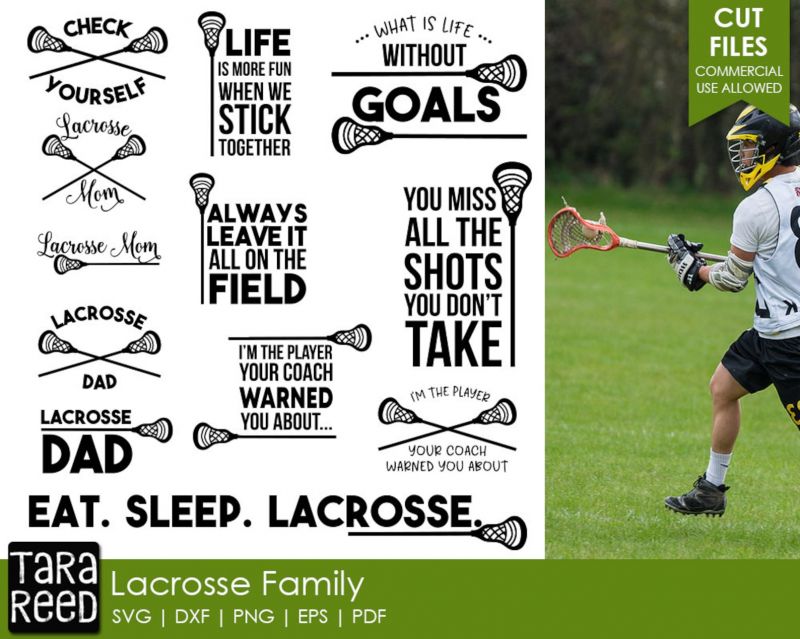
Goalies in lacrosse rely on oversized sticks to provide the expansive coverage needed to protect the net. While field players follow age and position-based stick length guidelines, goalie sticks stretch far longer to boost blocking range.
For field lacrosse players, acceptable youth stick lengths range from 37 to 42 inches based on age. High school and college field sticks extend up to 60 inches per NCAA and NFHS rules. However, goalie stick regulations differ, allowing for dramatically lengthened shafts.
According to current rules at all levels, legal goalie lacrosse stick lengths range from 40 to 72 inches. Youth goalies typically utilize sticks from 40 to 48 inches aligned with their smaller frames. As keepers grow into high school and college, length increases to 60+ inch shafts to maximize stopping coverage.
Wider head shapes also differentiate goalie sticks from field versions. Expanded heads up to 12 inches wide help block shots, compared to 6 inch field stick heads. The dramatically oversized dimensions of goalie stick heads coupled with extra long shafts provide more surface area to disrupt shots.
The added length especially aids tracking low shots near the goal mouth and down by the pipe. With the ability to wield 4+ feet of shaft, goalies can drop sticks quickly when attacking the bottom corners of the crease. Length also supports sweeping poke check motions to jar balls loose from dodging attackers.
During rapid-fire shot attempts, those extra inches give keepers a split-second advantage to get sticks on plane. For division’s top goalies, their oversized sticks act as extended arms to frustrate elite shooters. While specialized for their position, goalie’s sticks match their outsized job defending the cage.
Women’s Lacrosse Sticks Follow Position-Based Length Guidelines
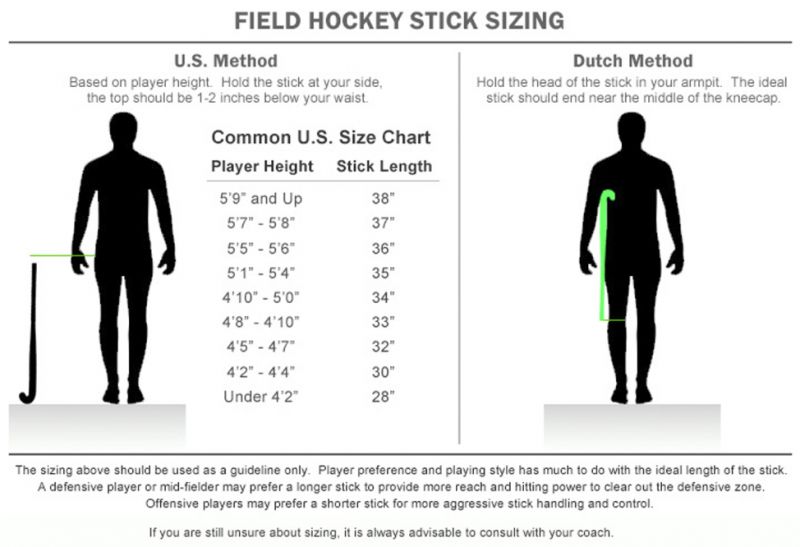
In women’s lacrosse, stick lengths fall within regulated ranges based on player age and position. While men’s field sticks can reach up to 60 inches, women’s lacrosse sticks follow more conservative specifications aligned with the non-contact nature of the women’s game.
For youth girls’ lacrosse players, stick length ranges from 35.5 to 43.25 inches based on age and position. Field players use sticks from 35.5 to 43 inches, while goalies get an extended maximum of 43.25 inches. In high school and college women’s lacrosse, stick lengths for field players go up to 45.5 inches, again with goalies allowed an extra half inch up to 46 inches total.
Within those ranges, defenders opt for longer sticks up to the limit to help defend shooting lanes and intercept passes. Their extra length aids checking motions to legally tap away sticks and disrupt offensive rhythm. Midfielders balance both offensive and defensive duties, so median lengths around 39 to 43 inches are preferred.
Attackers on the offensive end favor shorter, quicker sticks in the 35 to 39 inch range for tight stickhandling, crisp passing, and pinpoint shooting accuracy. Similarly, face-off specialists benefit from abbreviated lengths to gain possession on draws before transitioning into attacks.
Women’s lacrosse sticks follow a graduated sizing model aligned with players’ physical maturity and positional needs. While overall shorter than men’s lacrosse sticks due to non-contact rules, regulated women’s lacrosse stick lengths cater to athletes’ roles within structured team frameworks.
Buying a Quality Lacrosse Stick on a Budget
Finding the right lacrosse stick does not have to break the bank, even for young players going through sticks quickly as they grow. While top-tier sticks carry premium pricing, excellent budget-friendly sticks are available at lower price points without sacrificing quality.
When prioritizing price for a first lacrosse stick purchase, look for models in the $50 to $100 range from reputable sporting goods brands. Major manufacturers like STX, Maverik, and Warrior offer entry level sticks delivering reliable performance without breaking the budget.
Avoid ultra-cheap lacrosse sticks under $50, as poor quality materials and construction will not last through rigorous use. Invest a little more upfront into a thoughtfully engineered, value-priced stick from a trusted brand over a no-name generic model.
New players can also consider a used stick in good condition as another money saving route. Youth players in particular cycle rapidly through stick sizes as they grow and progress in skills. Secondhand sticks gently used for one season can offer massive savings.
Local sporting goods stores, online lacrosse forums, and pre-owned sporting equipment sites provide avenues to find discounted secondhand sticks. Be sure to inspect any used stick for cracks or significant wear before purchasing.
With budget lacrosse sticks from leading brands or lightly used models, new players can secure quality sticks protecting their wallets. Affordable options get athletes started on the right foot without costly investments as skills develop.
Proper Stringing Optimizes Lacrosse Stick Performance
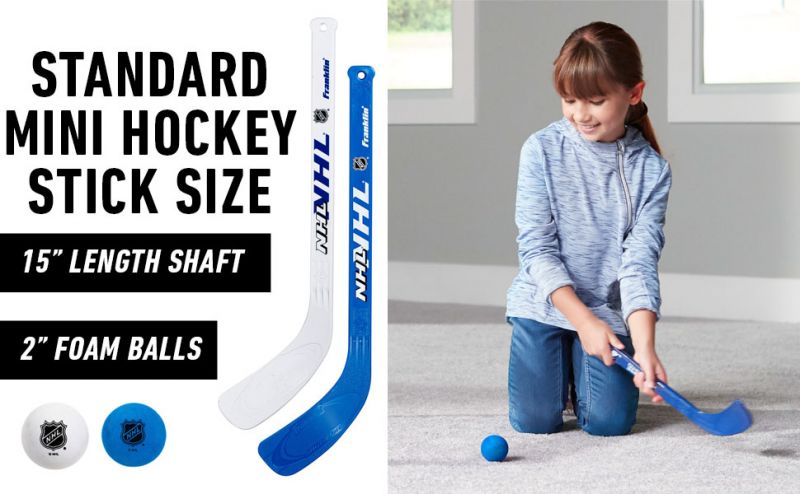
No matter the length, materials, or price point, a lacrosse stick must be properly strung to maximize performance. Optimized stringing improves handling, passing, catching, shooting, and scooping for players at every level from youth to college.
zent 문자열에 따라 공을 잡고, 패스하고, 슛하고, 줍는 능력이 달라집니다. 제대로 문자열을 해두면, 유소년부터 대학까지 모든 경기 수준의 선수들이 스틱 조작성, 패스, 캐치, 슛, 줍기 능력이 향상됩니다.
For pocket placement, beginners should string sticks with a mid to high pocket to make catching easier as they develop hand-eye coordination. Intermediate and advanced players can shift to a lower pocket for superior ball control during cradling and shooting on the run.
The pocket weave is also critical. Tighter stringing improves ball retention when being checked, while looser pockets channel faster passes and shots. Match the pocket tightness to the player’s style – tighter for ball carriers and looser for passer/shooters.
Pro shops at lacrosse retailers offer dependable stringing services for optimized pockets. While an extra cost, proper stringing guarantees sticks are tailored to a player’s skillset from day one. With the right pocket, athletes can elevate performance through maximized stick handling.
Lacrosse Stick Handle Shape Impacts Comfort and Control
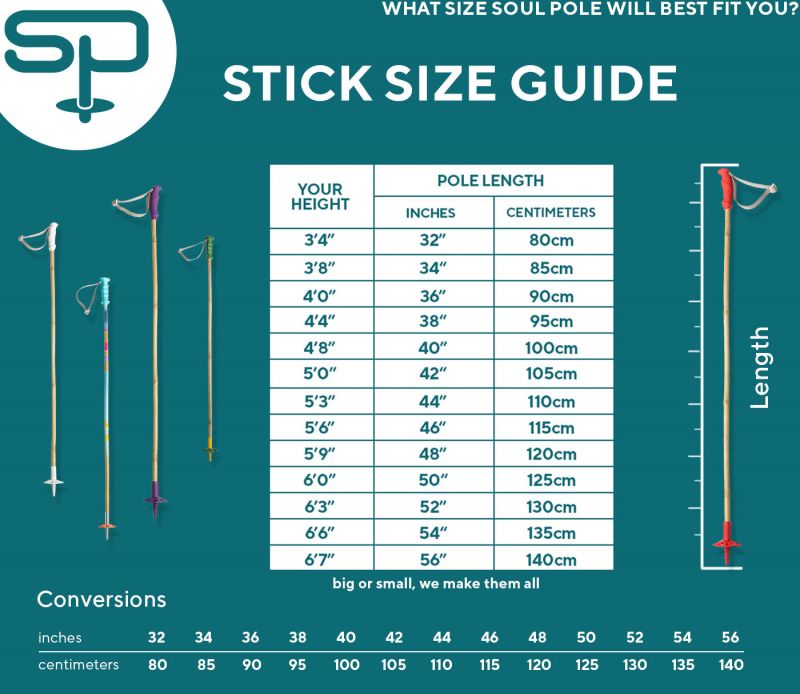
Beyond length and stringing, the shape and material of a lacrosse stick’s handle also affect performance. Optimal handle construction improves comfort, grip, and control for cradling, scooping, passing, and shooting in all field conditions.
For youth sticks, round handles provide the most versatile grip, especially for beginners still developing fundamentals. Round handles fit comfortably in small hands and facilitate quick rotations for cradling and shooting.
For intermediate and advanced players, octagonal handles offer more tactile grip during play. The flat sides give hands more contact points for consistent control when maneuvering the stick through intricate techniques.
On the material side, composite and titanium handles best combat moisture. Unlike wood or aluminum handles, composite and titanium shafts won’t get slick when wet from rain or sweaty hands. The improved traction helps maintain command of the stick in all weather.
For goalies, oversized round handles maximize hand positioning flexibility as keepers track shots. Top goalies also favor lightweight handles for quick maneuvering of oversized sticks covering the net.
Considering handle shape and construction alongside length ensures players select sticks providing the ultimate in responsiveness, control, and performance across all positions and field conditions.
Lacrosse Stick Weight Impacts Performance for Youth Players
When selecting lacrosse sticks for youth players, weight is a key factor for optimal performance. Materials used in shaft and head construction determine the overall heft and maneuverability of sticks suited for developing players.
For starters, composite lacrosse shafts offer the lightest weight option. Made from composite materials like carbon fiber, composite shafts are both lightweight and durable, perfect for youth. Titanium shafts provide another ultra-light choice, though at a higher cost level.
Shafts made of solid wood or heavier metals like aluminum add unnecessary weight for young players still building skills and strength. The extra ounces compromise quick handling and control needed to perfect fundamentals.
Head weights also vary between plastic, composite, and metal versions. Plastic heads with holes or mesh inserts reduce heft compared to solid plastic designs. Composite heads shave even more weight while retaining durability and shape. Metal heads on youth sticks should be avoided due to excess weight.
Together, composite or titanium shafts paired with plastic or composite heads form optimally balanced lacrosse sticks scaling to a youth athlete’s size and strength. Excess weight distracts from developing coordination, cradling, scooping, passing, and shooting skills suited for smaller statures.
With technology advancing lacrosse stick engineering, parents can find super lightweight yet durable sticks to maximize performance gains for youth players each season.
Adjustable Lacrosse Sticks Offer Flexibility, With Some Drawbacks

Adjustable length lacrosse sticks provide an appealing option for families with growing young athletes. Allowing parents to extend stick length incrementally, adjustable sticks reduce the need to buy new fixed-length sticks each season.
Adjustable lacrosse sticks feature telescoping shafts enabling users to extend length anywhere from 37 to 42 inches for youth models and 40 to 60 inches for high school versions. Locking mechanisms hold the shafts at set lengths until manually adjusted again.
This adjustability means players can use the same stick as they grow and progress in skills from year to year. Families save on replacement stick costs while young athletes maintain familiarity with a single stick over multiple seasons.
However, adjustable shafts may lose rigidity when fully extended, as the extended inner shaft can bend or flex more than a fixed-length piece. Weighting can also feel off at maximum lengths versus properly balanced fixed sticks.
For serious players pursuing elite levels, fixed sticks provide more consistent responsiveness once the ideal length is identified. But for recreational players, adjustables offer a cost-effective convenience factor as youth athletes develop.
Used Lacrosse Sticks Offer Savings If NCAA/NFHS Rules Followed
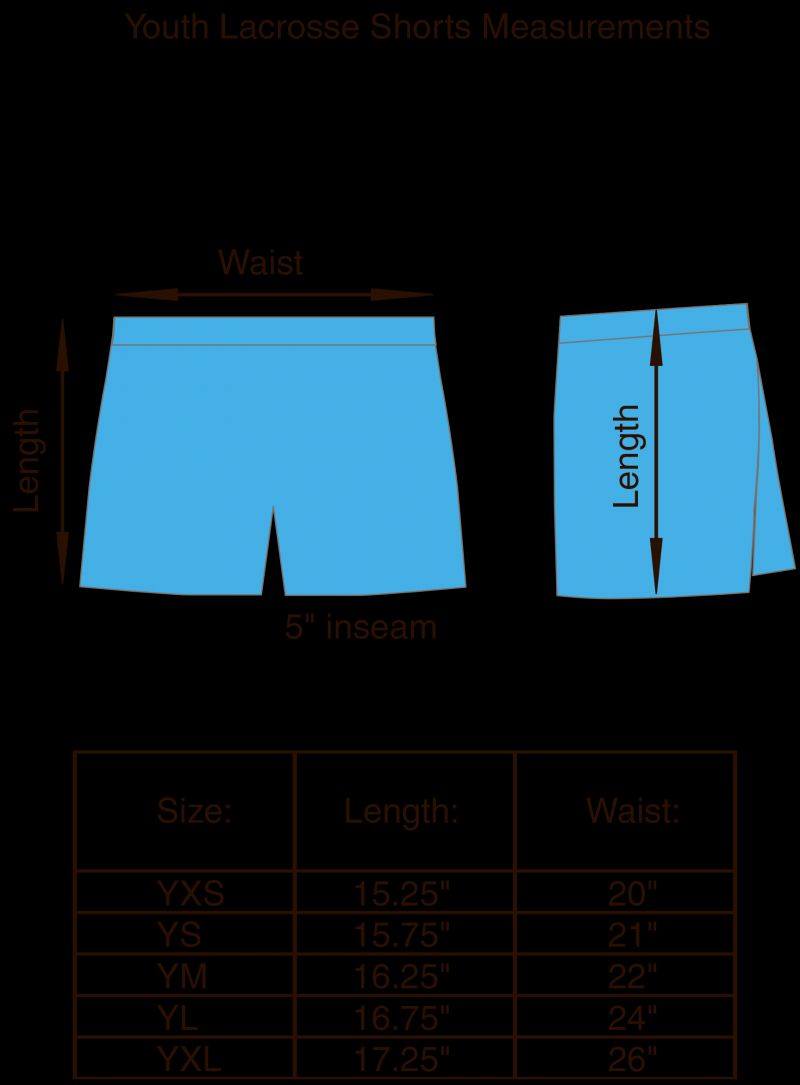
Saving money on quality lacrosse gear is appealing for players and parents. One money-saving option is using a pre-owned stick passed down from an older sibling, friend, or purchased secondhand.
Gently used sticks, especially for youth players outgrowing sticks quickly, provide massive savings over new gear. However, NCAA and NFHS rules dictate very specific requirements for legal secondhand sticks.
Any pre-owned stick must adhere to the same sizing guidelines as new sticks per NCAA/NFHS regulations. Length, pocket depth, and width must conform for specific age groups and positions. No grandfathering of outdated specs is allowed.
Additionally, re-stringing used sticks to match current stringing rules is required. Deep bags and uneven stringing, even if legal years ago, cannot transfer to new owners today.
With used sticks, inspect carefully for cracks around the head or handle that may compromise safety and durability. Assuming compliance with current rules and equipment integrity, pre-owned sticks deliver an affordable, earth-friendly option.
Proper Protective Gear Should Align with Lacrosse Stick Size
When youth lacrosse players transition to new stick lengths, protective gear may need adjusting as well. Fitting gloves, pads, and helmets to appropriately match updated stick sizes ensures maximum safety and performance.
Lacrosse gloves with oversized or undersized palm padding affects proper hand positioning and grip on new stick handles. When sticks get longer, gloves may need sizing up so wrist protection doesn’t cut off mid-forearm with an extended shaft.
Elbow pad lengths also need correlation to new stick lengths. Longer sticks mean arms extend further on checks, catches, and cradling, requiring elbow pads to reach beyond elbows. Shoulder pads fitted too snug can restrict full range of motion with longer sticks, as well.
Even lacrosse helmets may need a size adjustment when sticks get significantly longer. A helmet tailored too compact can limit head rotation required when maneuvering a longer stick for passing, shooting, or scooping.
Take time to assess the fit of all protective elements – gloves, pads, and helmets – after transitioning to longer lacrosse sticks. Ensuring gear works in unison with stick length maximizes mobility and safety.
Lacrosse Stick Sizing Considerations During Tryouts
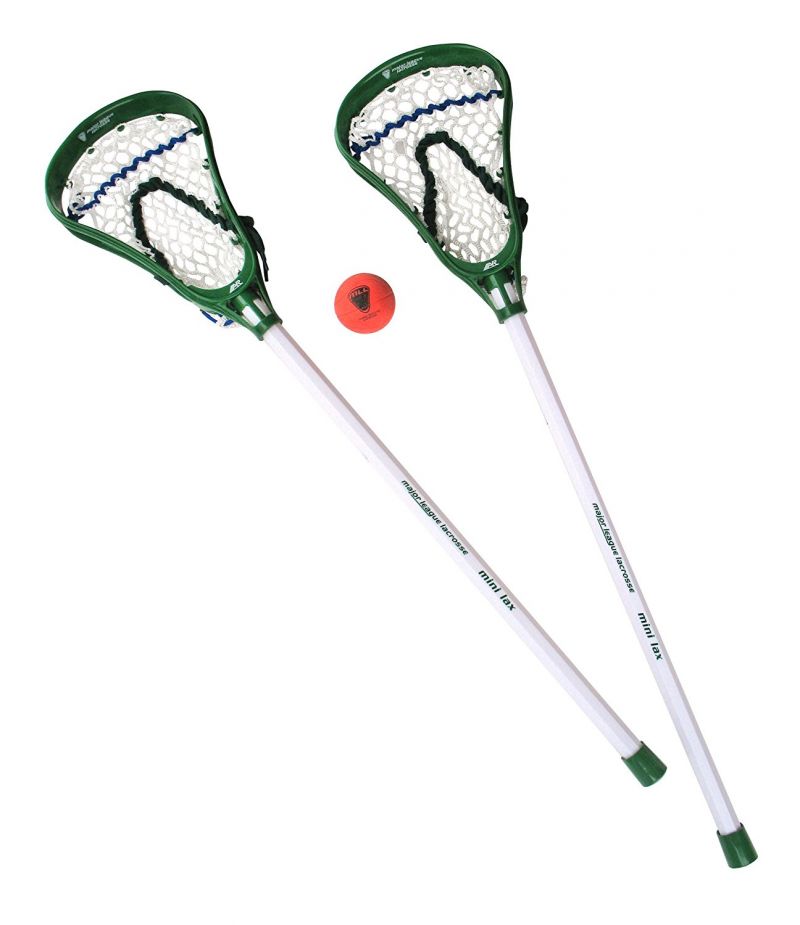
For youth lacrosse players, the stick sizing process often coincides with tryouts as coaches assemble teams. Optimizing stick fit before tryouts gets players off to the best start for evaluating skill levels.
Ideally, players should have appropriately sized sticks aligned to their age, size, and position ahead of tryouts. Using sticks meeting US Lacrosse youth length rules of 37-42 inches ensures proper fundamentals can be demonstrated.
During skils stations and scrimmages, coaches analyze passing, catching, shooting, stick handling, and checking abilities – all of which hinge on correct stick sizing. Ill-fitted sticks obscure true talents, while proper sticks let skills shine.
If budget permits just one stick, go with a median 40 inch size to cover multiple field positions until settling on a final team role. Otherwise, get sized separately for field or goalie duties as needed.
While skills and athleticism determine team placement, proper lacrosse stick sizing allows for an accurate portrayal of players’ current abilities. Solid stick fundamentals forged with correctly sized sticks can provide an edge when coaches evaluate tryout performance.
Adjusting Lacrosse Stick Size Mid-Season
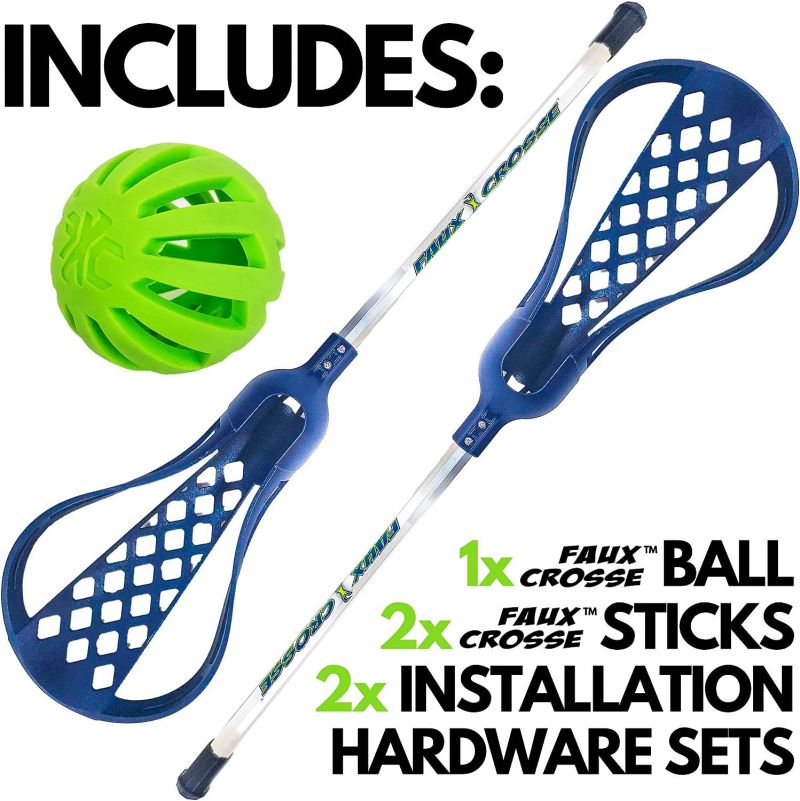
Even after lacrosse season starts, stick sizing should be monitored as youth players grow or change positions. Adjusting stick size mid-season ensures athletes perform at peak levels with properly fitted gear.
For middle school players hitting growth spurts during the season, their starter stick may quickly become undersized. Shooting, scooping, and passing mechanics falter as arms and hands outgrow shafts and grip dimensions.
Despite the learning curve switching sticks mid-season, an upsized stick restores proper form and prevents bad habit development. Take the time at practices to adjust to longer sticks so fundamentals stay on track.
Players moving to new positions like goalie or defense may also benefit from resizing. Defenders need longer sticks for checking range, while goalies require oversized heads and specialized overlong shafts.
While an inconvenience, mid-season sizing changes ensure players perform comfortably and safely. Stick handling skills may temporarily regress but quickly improve once players settle into new sticks sized right for their current needs.